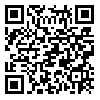پنجشنبه 11 دی 1404
دوره 11، شماره 1 - ( 10-1403 )
جلد 11 شماره 1 صفحات 50-38 |
برگشت به فهرست نسخه ها
Ethics code: IR.IAU.RASHT.REC.1401.027
Download citation:
BibTeX | RIS | EndNote | Medlars | ProCite | Reference Manager | RefWorks
Send citation to:



BibTeX | RIS | EndNote | Medlars | ProCite | Reference Manager | RefWorks
Send citation to:
Montakhab Madani M, Rahmati Ghofrani Y, Yousefzadeh Chabok S, Saberi Haghayegh R A. Analysis of Users’ Neural Responses to Native Advertisements Using Cognitive Indicators and Electroencephalography. Caspian J Neurol Sci 2025; 11 (1) :38-50
URL: http://cjns.gums.ac.ir/article-1-734-fa.html
URL: http://cjns.gums.ac.ir/article-1-734-fa.html
Analysis of Users’ Neural Responses to Native Advertisements Using Cognitive Indicators and Electroencephalography. مجله علوم اعصاب کاسپین. 1403; 11 (1) :38-50
چکیده: (1207 مشاهده)
Background: Neuromarketing has provided deep insights into customers’ motivations and decisions by measuring consumers’ neural signals and studying their responses to marketing stimuli.
Neuromarketing analyzes neural signals and examines consumers’ reactions to marketing stimuli, offering profound insights into their motivations and decision-making.
Objectives: This research aimed to study the brain waves of users before and during the viewing of native advertisements and the relationship between neural responses of the brain and self-report.
Materials & Methods: The data collection tools included a questionnaire, a video and an encephalography device. The sample consisted of 20 participants from the staff and students of Guilan University of Medical Sciences, Rasht City, Iran. The electroencephalography (EEG) data were converted to numerical values using MATLAB software, , version 2024.
Results: In the advertisement viewing state compared to the resting state, the average power spectral density (PSD) of theta at F4 decreased from 3.25 to 2.59. The average PSD of beta at F4 decreased from 0.67 to 0.53 and at F7 from 0.89 to 0.75. A significant difference was observed in these regions. A correlation coefficient of 0.447 was observed between native advertising components and the average beta PSD, and correlation coefficients between attitude and the average theta PSD (F7=0.244), alpha (F3=0.13) and beta (F3=0.457) were positive and significant.
Conclusion: The increase in the PSD of brain waves in the Fp1 during advertisement viewing indicated a positive attitude. The average absolute PSD of the beta wave was significantly aligned with individuals’ conscious reactions (attitudes) toward components of native advertising. The positive relationship between the advertisement’s impact on individuals’ attitudes (self-report) and neural responses during advertisement viewing in the F7 theta wave channel and the F3 alpha and beta wave showed that these responses were aligned with positive emotions.
Neuromarketing analyzes neural signals and examines consumers’ reactions to marketing stimuli, offering profound insights into their motivations and decision-making.
Objectives: This research aimed to study the brain waves of users before and during the viewing of native advertisements and the relationship between neural responses of the brain and self-report.
Materials & Methods: The data collection tools included a questionnaire, a video and an encephalography device. The sample consisted of 20 participants from the staff and students of Guilan University of Medical Sciences, Rasht City, Iran. The electroencephalography (EEG) data were converted to numerical values using MATLAB software, , version 2024.
Results: In the advertisement viewing state compared to the resting state, the average power spectral density (PSD) of theta at F4 decreased from 3.25 to 2.59. The average PSD of beta at F4 decreased from 0.67 to 0.53 and at F7 from 0.89 to 0.75. A significant difference was observed in these regions. A correlation coefficient of 0.447 was observed between native advertising components and the average beta PSD, and correlation coefficients between attitude and the average theta PSD (F7=0.244), alpha (F3=0.13) and beta (F3=0.457) were positive and significant.
Conclusion: The increase in the PSD of brain waves in the Fp1 during advertisement viewing indicated a positive attitude. The average absolute PSD of the beta wave was significantly aligned with individuals’ conscious reactions (attitudes) toward components of native advertising. The positive relationship between the advertisement’s impact on individuals’ attitudes (self-report) and neural responses during advertisement viewing in the F7 theta wave channel and the F3 alpha and beta wave showed that these responses were aligned with positive emotions.
| بازنشر اطلاعات | |
 | این مقاله تحت شرایط Creative Commons Attribution-NonCommercial 4.0 International License قابل بازنشر است. |



